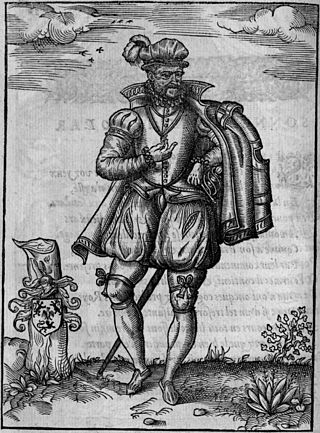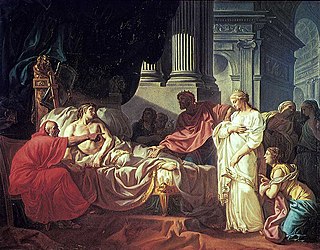Related Research Articles
The year 1623 in science and technology involved some significant events.

Blaise de Vigenère was a French diplomat, cryptographer, translator and alchemist.

The known history of fencing in France begins in the 16th century, with the adoption of Italian styles of fencing.
Antoine de Nervèze was a French nobleman and writer of novels, translations, letters and moral works at the end of the 16th and beginning of the 17th centuries.

Jean Starobinski was a Swiss literary critic.

Jean-Pierre Falret was a French psychiatrist. He was born and died in Marcilhac-sur-Célé.

Jean Paulhan was a French writer, literary critic and publisher, director of the literary magazine Nouvelle Revue Française (NRF) from 1925 to 1940 and from 1946 to 1968. He was a member of the Académie française. He was born in Nîmes (Gard) and died in Paris.
Edmund Chilmead was an English writer and translator, who produced both scholarly works and hack-writing. He is also known as a musician.
Pierre-Joseph Buc'hoz was a French physician, lawyer and naturalist.
The French Syndicate of Cinema Critics has, each year since 1946, awarded a prize, the Prix Méliès, to the best French film of the preceding year. More awards have been added over time: the Prix Léon Moussinac for the best foreign film, added in 1967; the Prix Novaïs-Texeira for the best short film, added in 1999; prizes for the best first French and best first foreign films, added in 2001 and 2014, respectively; etc.
Jackie Pigeaud was a French professor of Latin and historian of medicine. He occupied a chair at the University of Nantes and was a member of the Institut Universitaire de France.

Charles Saint-Yves, or Charles de Saint-Yves, was a French ophthalmologist, famous for his treatment of the cataract and his treatise on ophthalmology.

Maîtresse Françoise is a publicly known dominatrix in Paris, France. Her autobiography was published in France by publisher Éditions Gallimard.
The year 1586 in science and technology included a number of events, some of which are listed here.

Renée Dunan (1892–1936), was a French writer, critic and poet.

Erasistratus Discovering the Cause of Antiochus' Disease is a 1774 oil painting by French neoclassical artist Jacques-Louis David. The work is a history painting depicting an episode from Plutarch's Lives in which Greek court physician Erasistratus diagnoses the illness of Antiochus, the son of Seleucus I, as lovesickness for his stepmother Stratonice. The painting was awarded the 1774 Prix de Rome by the Académie royale de peinture et de sculpture.

Jeanne de Cambry or Jeanne-Marie de la Présentation (1581–1639) was an ascetic author and religious foundress in the Habsburg Netherlands.

Philippe Petit-Radel was a French physician, surgeon and writer, editor of the two volumes devoted to Surgery by the Encyclopédie méthodique.

Élizabeth Herrgott was a French writer who specialized in erotic and pornographic material.
Jean Gesse, known as Jean de La Gessée, born in Mauvezin in Gascony around 1550 and died around 1600, was a French poet, historian and genealogist.
References
- ↑ Donald A. Beecher: "Erotic Love and the Inquisition: Jacques Ferrand and the Tribunal of Toulouse, 1620". The Sixteenth Century Journal, Vol. 20, No. 1 (Spring, 1989), pp. 41-53 JSTOR 2540522.
- ↑ Lydia Kang MD & Nate Pederson. Quackery: A Brief History of the Worst Ways to Cure Everything "Bleed Yourself to Bliss" (Workman Publishing Company; 2017)